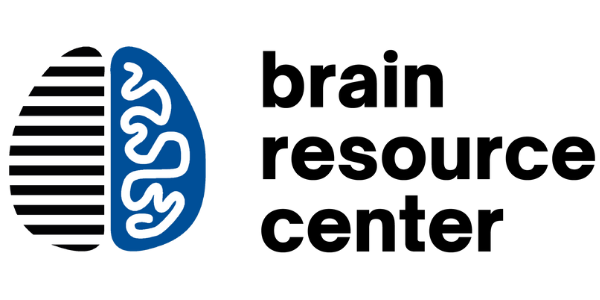Neurofeedback Therapy in NYC
What is neurofeedback?
Neurofeedback, a well-established therapeutic treatment dating back to the 1950s, has proven to be effective in addressing a wide range of mental and cognitive conditions while optimizing brain function. Through extensive research, it has emerged as a valuable tool in treating anxiety, depression, ADHD, addiction, and even enhancing memory and cognitive capabilities. (Explore the full list of disorders we address here.)
At its core, neurofeedback utilizes real-time displays of your brain activity to empower you with self-regulation techniques. Brain waves, the electrical signals responsible for our thoughts, movements, sleep, and more, exhibit distinct patterns in individuals with mental and cognitive variances. For instance, increased activity in the right frontal region relative to the left is associated with depression, while an overactive amygdala (the emotional brain) in relation to the prefrontal cortex (the logical brain) is linked to anxiety.
The treatment starts with a comprehensive brain map assessment, which allows us to identify specific regions of your brain where certain brain waves are either excessively high or too low, compared to a healthy, balanced brain. With this information, we develop a precise diagnosis and targeted treatment plan to address and correct these imbalances.
How does neurofeedback work?
During a neurofeedback session, electrodes are placed on your head to measure specific brain activity that we aim to correct.
As we address symptom-associated brain activity, you receive immediate feedback when certain patterns are either too high or too low. This feedback is delivered through music or other audio/visual media, serving as a reward when you exhibit positive brain wave activity and being withdrawn when you deviate from healthy patterns. Through consistent exposure to this feedback, your brain learns to recalibrate and adjust its behavior.
Over time, this process helps your brain not only move away from unhealthy patterns but also develop new neural pathways associated with a healthy, balanced brain. By actively participating in your own neurofeedback treatment, you can witness the transformative power of neuroplasticity—the brain's ability to reorganize and rewire itself—leading to improved mental well-being and a more harmonious cognitive state.
The treatment timeframe is intensive with 2-3 sessions per week, with long-term results expected to be achieved after 30-40 sessions. This intensive approach is necessary for a lasting, long-term effect, but most clients will start to feel alleviation of symptoms after a few sessions.
Why try neurofeedback?
Neurofeedback is a popular choice for those who are seeking an alternative treatment to pharmacological approach or those would like a supplementary treatment that can be done alongside their current treatment regimen.
medication-free
non-invasive, no pain or discomfort
safe & effective for all ages
personalized to your brain
research-backed and shown to be effective for a variety of conditions/symptoms
Neurofeedback Process
-

1. Brain map
Brain map assessment identifies imbalances and helps to create a personalized treatment plan.
-

2. Treatment setup
Non-invasive sensors and headphones are placed on your head and the treatment session begins.
-

3. Brain activation
Software translates your brainwave data and stops or starts audio/visual media based on your brain activity.
-

4. Conditioning
In response to the audio/visual feedback, your brain adapts and learns to regulate your brainwaves and build new, healthy neural pathways.
-

5. Training
Over time, healthy brain activity in target regions increases, and symptom-associated activity decreases.
Types of Neurofeedback
Neurofeedback
A non-invasive treatment that monitors electrical activity of the brain, treating a range of cognitive and mental disorders.
Our software translates brain wave activity in real-time to a computer program. This program is linked to audio and visual media, which stops when you are experiencing negative, symptom-associated brain behavior, or when you aren’t showing enough positive brain behavior.
Over time, your brain is conditioned to create and strengthen neural pathways associated with a healthy brain (those that keep the media on), leading to improved mood, memory, and attention. It also unlearns neural pathways associated with anxiety, depression, hyperactivity, and other negative symptoms.
We offer all standard neurofeedback protocols, such as alpha/theta training, sensorimotor rhythm (SMR), and theta/beta training. In addition, we also utilize a number of protocols that we have developed at the Brain Resource Center over the last 20 years.
A combination of different protocols may be used to create a personalized treatment plan.
Low Energy Neurofeedback System (LENS)
This technique utilizes a very low power electromagnetic field to carry feedback and produce a measurable change in brainwaves.
Low Energy Neurofeedback System (LENS) uses a very low power electromagnetic field providing feedback in real time. Although the feedback signal is weak, it produces a measurable change in the brainwaves without a conscious effort from the individual receiving the feedback. The LENS software allows the electroencephalogram (EEG) signals that are recorded at the scalp to control the feedback.
Hemoencephalography (HEG)
This method monitors and regulates blood flow in the brain.
Clients are given real-time readings of levels of blood flow to target regions of the brain. The amount of blood flow is directly proportional to the amount of activity in a given region, so measuring blood flow gives a measure of the relative activation of target areas.
Similar to with traditional neurofeedback, receiving this information over time allows clients to develop control over the blood flow, therefore activating or reducing activity of different parts of the brain.
Thermal Passive Infrared HEG (PIRHEG) & Optical Near Infrared HEG (NIRHEG) can treat various disorders including ADHD, Migraine/Headaches, and other neurobehavioral disorders. This method is very useful in conjunction with traditional neurofeedback.
Neurofeedback with Dr. Fallahpour at Brain Resource Center
With over 25 years of experience, Dr. Kamran Fallahpour is a licensed clinical psychologist, neuroscientist, and brain-computer interface (BCI) expert. Dr. Fallahpour, a trailblazer in Brain-Computer Interface technology, has helped pioneer innovations such as the first Bluetooth EEG hardware, contributed to the largest international normative brain database for EEG, ERPs, and psychometrics, and participated in international trials seeking to identify biomarkers in depression and ADHD. Additionally, his patented innovations have advanced brain monitoring technology and paved the way for more effective and accessible brain training treatments.
At Brain Resource Center, he has helped thousands of patients achieve better brain health. He uses a personalized approach that tailors treatment journey to each individual’s brain and circumstance.




